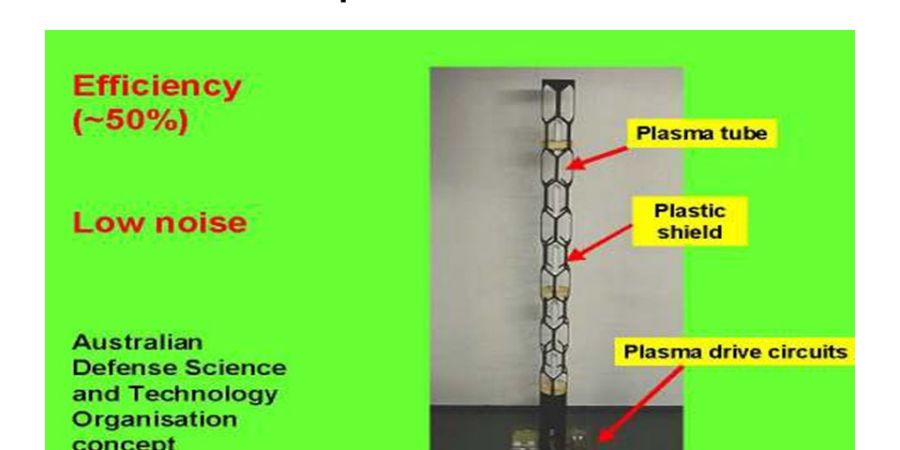

On earth we live upon an island of ordinary matter. The different states of matter generally found on earth is solid, liquid, and gas. Sir William Crookes, an English physicist identified a fourth state of matter, now called plasma, in 1879. Plasma is by far the most common form of matter. Plasma in the stars and in the tenuous space between them makes up over 99% of the visible universe and perhaps most of that which is not visible. Important to ASI s technology, plasmas are conductive assemblies of charged and neutral particles and fields that exhibit collective effects. Plasmas carry electrical currents and generate magnetic fields. When the Plasma Antenna Research Laboratory at ANU investigated the feasibility of plasma antennas as low radar cross-section radiating elements, Recentre established a network between DSTO ANU researchers, CEA Technologies, Cantic Australasia and Neolite Neon for further development and future commercialization of this technology. The plasma antenna R & D project has proceeded over the last year at the Australian National University in response to a DSTO (Defence Science and Technology Organization)contract to develop a new antenna solution that minimizes antenna detectability by radar. Since then, an investigation of the wider technical issues of existing antenna systems has revealed areas where plasma antennas might be useful. The project attracts the interest of the industrial groups involved in such diverse areas as fluorescent lighting, telecommunications and radar. Plasma antennas have a number of potential advantages for antenna design.
When a plasma element is not energized, it is difficult to detect by radar. Even when it is energized, it is transparent to the transmissions above the plasma frequency, which falls in the microwave region. Plasma elements can be energized and de-energized in seconds, which prevents signal degradation. When a particular plasma element is not energized, its radiation does not affect nearby elements. HF CDMA Plasma antennas will have low probability of intercept (LP) and low probability of detection (LPD) in HF communications. Plasma antennas are radio frequency antennas that employ plasma as the guiding medium for electromagnetic radiation. The concept is to use plasma discharge tubes as the antenna elements. When the tubes are energized, they become conductors, and can transmit and receive radio signals. When they are de-energized, they revert to non-conducting elements and do not reflect probing radio signals. Plasma antenna can be Steered electronically. Another feature of the plasma antenna is that it can be turned off rapidly, reducing ringing on pulse transmission.
Types of plasma antenna
1. Gas chamber: In this type, we use the DC discharge system with a very high-voltage source applied to cathode and anode, and then the signal is superimposed on it (a plasma column). This is a primitive implementation of plasma antenna.
2. Solid-state semiconductor type: The concept of this type of plasma antenna is that the charge carriers in metal and semiconductor behave similar to those in gas plasma. The medium properties will vary as per constructions. However, the interaction of EM waves with charge carriers will have very similar properties to that of quasi-neutral particles. The semiconductor having enough free carriers to interact with EM waves is called semiconductor plasma with very high electron density that can be obtained by heating, current injection or by optical excitation.
Plasma behaves as a reflector if the frequency is lower than the plasma frequency. The reflection occurs at a critical surface inside of the plasma. The interesting of this is the rapid inertia less two-dimensional scanning, frequency selectivity and potential wideband frequency performance. Plasma reflectors can be created using laser and optics using a sequence of line discharges forming a sheet of plasma.
As part of a “blue skies” research program, DSTO has teamed up with the ANU’s Plasma Research Laboratory to investigate the possibility of using plasmas like those generated in fluorescent ceiling lights, for antennas The principle behind the working of the plasma antenna is same as the normal conventional antennas. Only the solid metal conductor is replaced with the plasma. This plasma gives it many advantages over the current antennas. It is more efficient, fast and also can be manufactured cheaply. There might be some disadvantages associated with plasma antennas but those can be overcome. It will take some time for plasma antennas to be commercially available, but it will change the landscape ofantennas when it is available for use.
